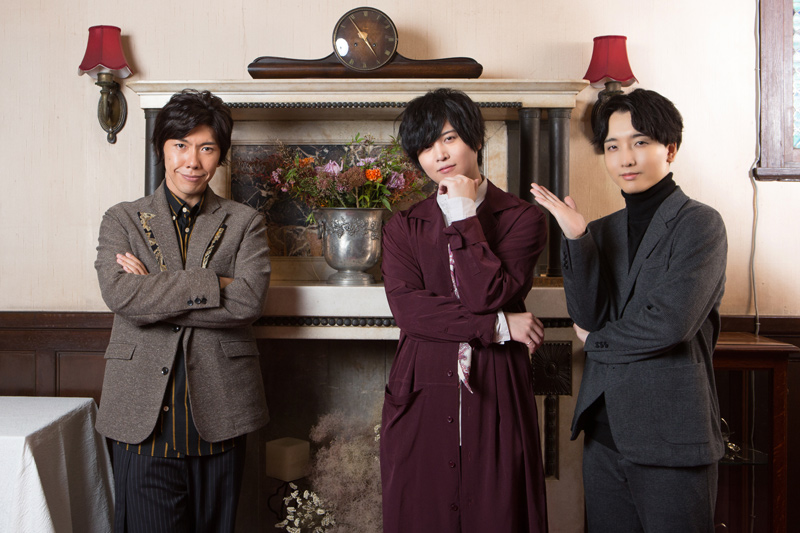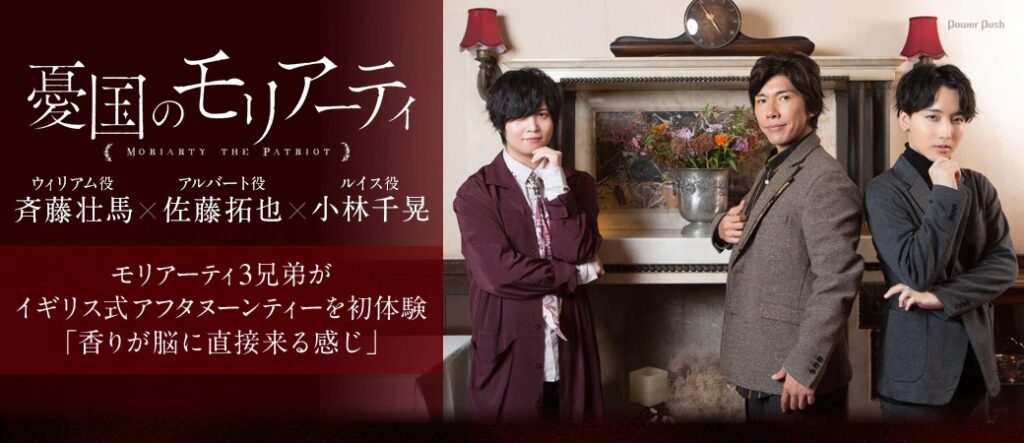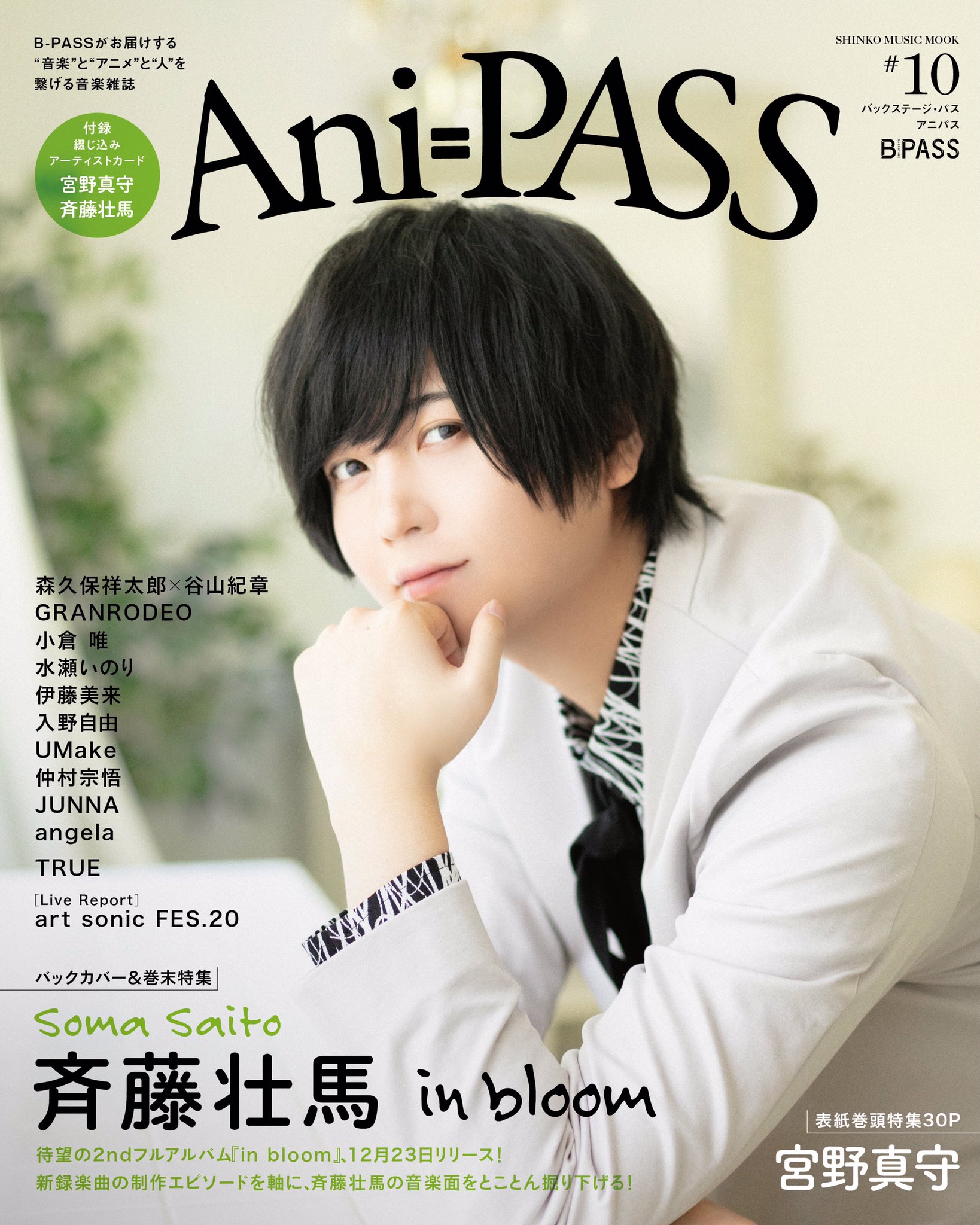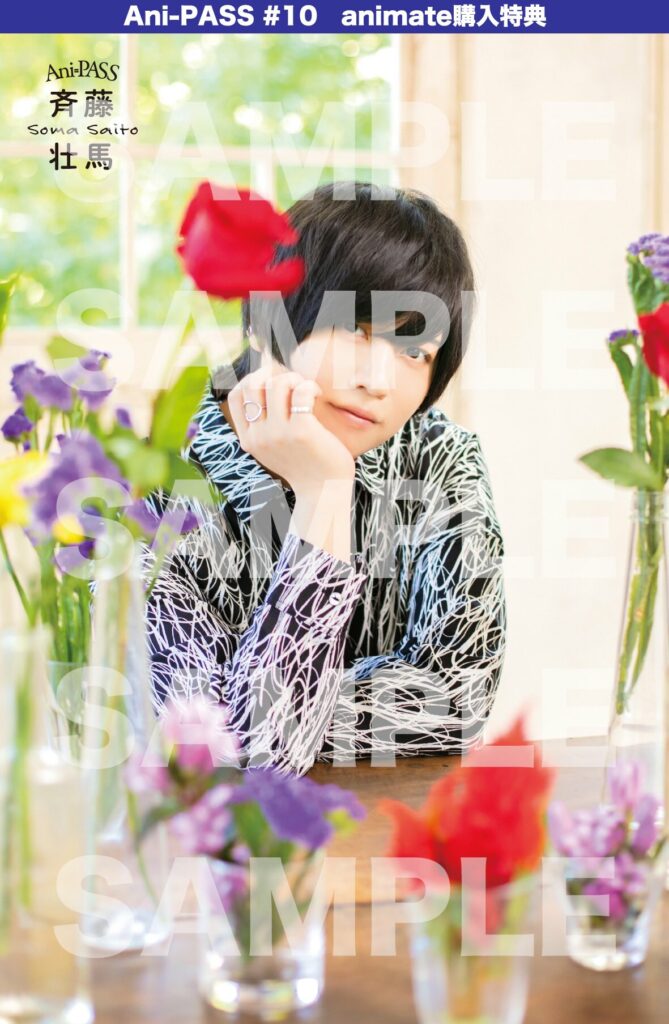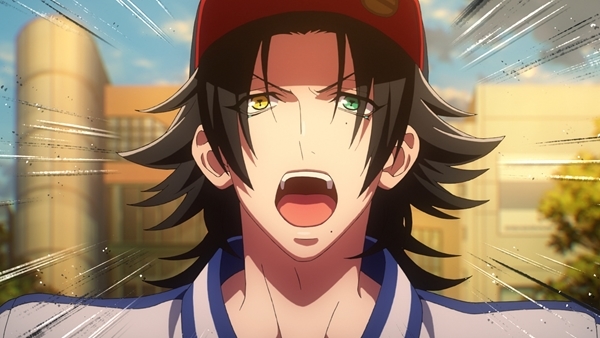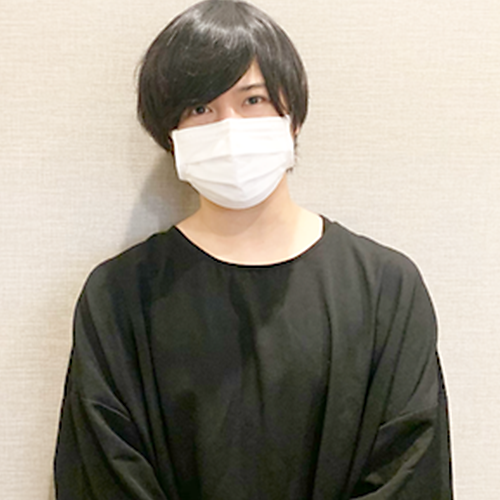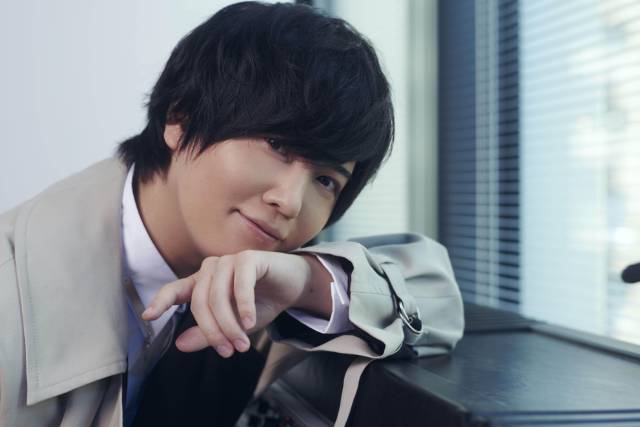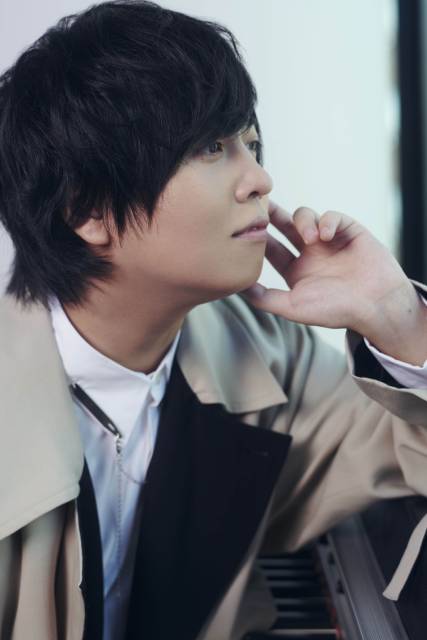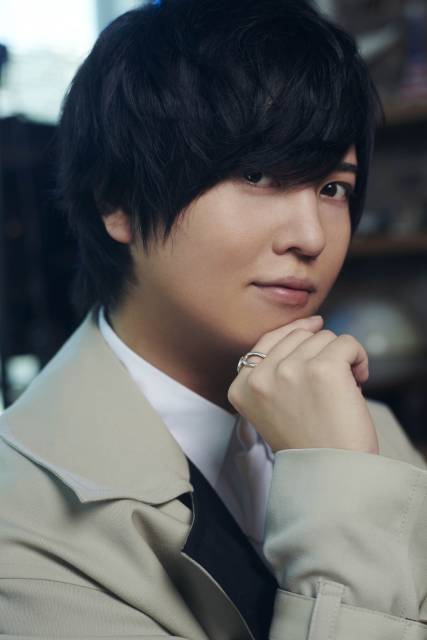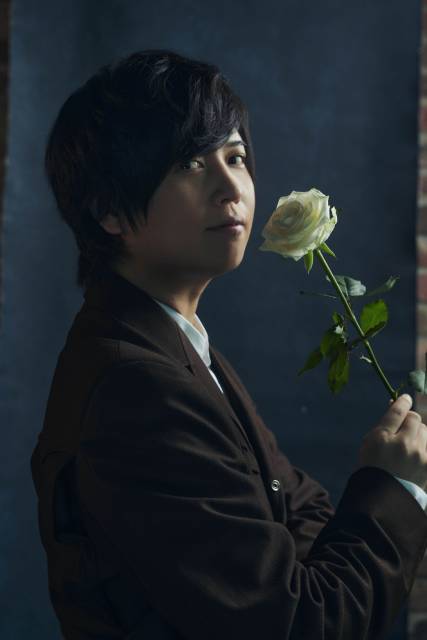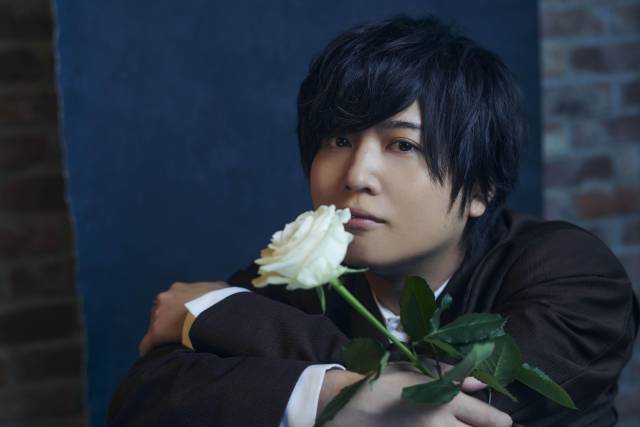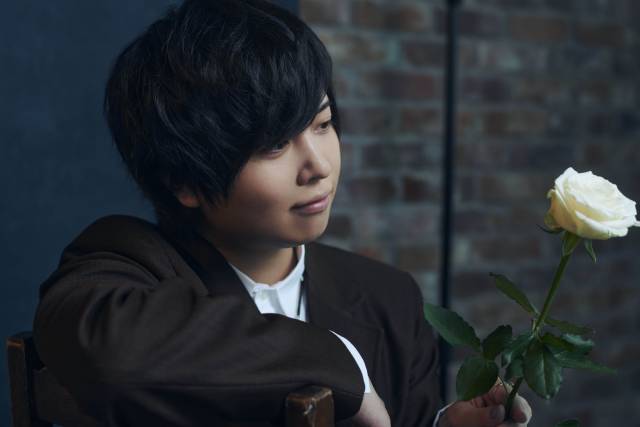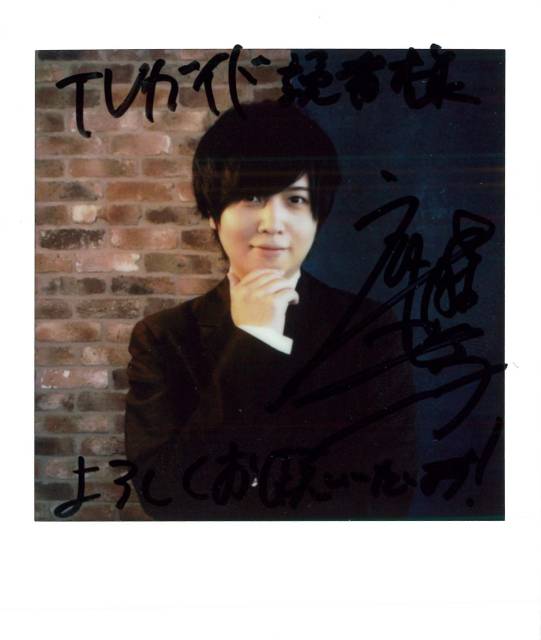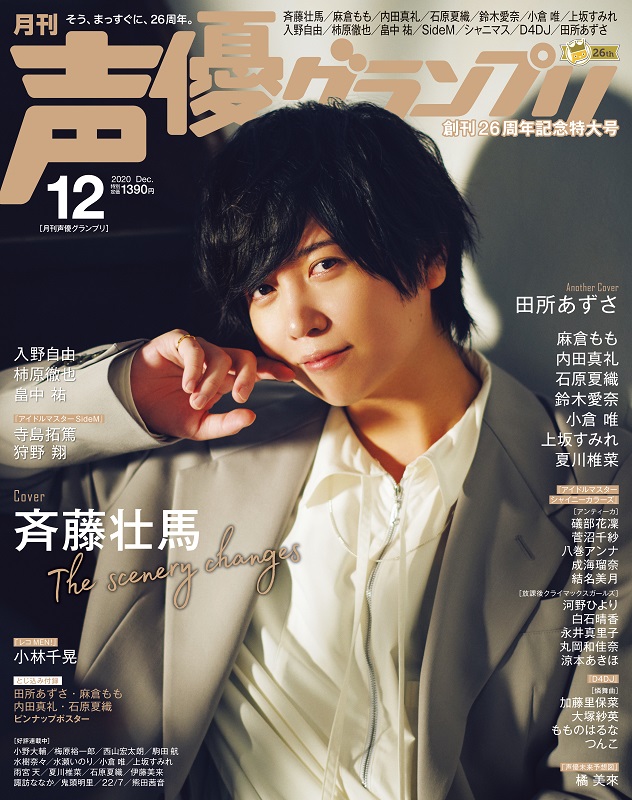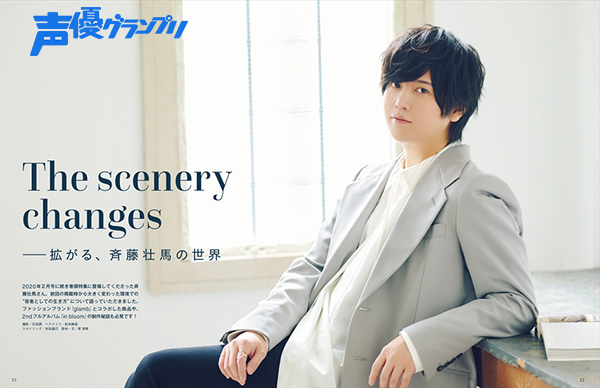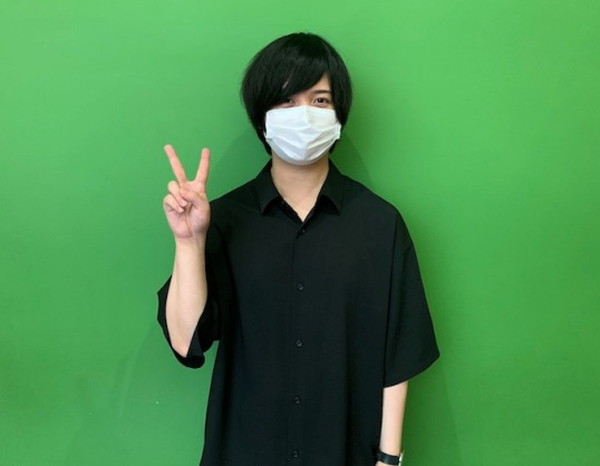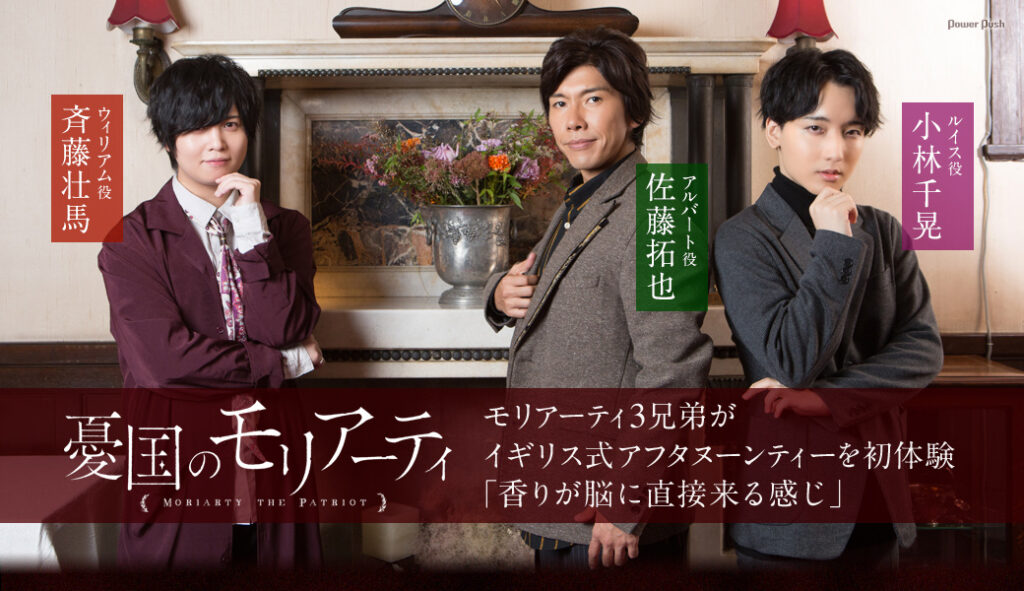
Published: 2020/12/10
Original URL: https://natalie.mu/comic/pp/moriarty02
Features:
Saito Soma (William James Moriarty in Yuukoku no Moriarty)
Sato Takuya (Albert James Moriarty in Yuukoku no Moriarty)
Kobayashi Chiaki (Louis James Moriarty in Yuukoku no Moriarty)
※This is a report + interview on the “Afternoon Tea Experience” that was filmed as bonus footage for Vol.2 of the anime’s BD/DVD release.
※※Due to visual similarity between Saito and Sato, I switched to using first names outside of direct quotes.
Saito Soma x Sato Takuya x Kobayashi Chiaki
Afternoon Tea Experience Report
A few days before the TV broadcast of Yuukoku no Moriarty began, Soma, Takuya, and Chiaki gathered at a certain location—Salon “Three Tiers”, a inconspicuous hideaway in Meguro, a residential district in Tokyo. On this drizzly day, to coincide with the setting of Yuukoku no Moriarty, the three of them came here to learn about British-style afternoon tea.
First was the filming of the opening footage. The weather was unfortunate, but they said, “This weather is actually Moriarty-esque, right?”, “London doesn’t give the impression of clear weather”, “I can imagine nobles using umbrellas a lot.” They already had the friendly atmosphere of the three brothers.
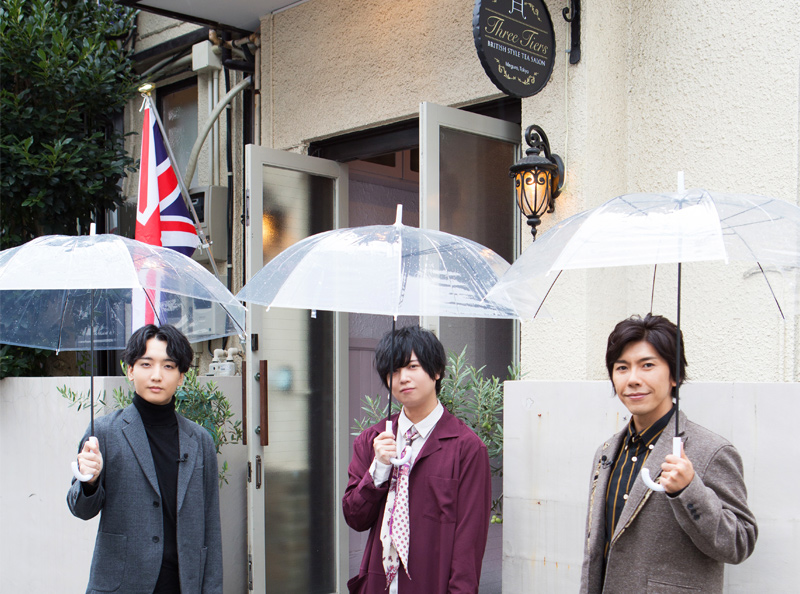
It was their first time experiencing real afternoon tea, and they nervously went inside. First, the owner, Shintaku Hisaki, explained Three Tiers and the 80-year old Western house it inhabited, which is a registered cultural property. Faced with the historical building and the numerous furnishings inside, Soma murmured, “I want to live here…”
Five types of black tea were brought to the table. “Royal Wedding” makes an impact with its rose fragrance and bright flower petals. “Darjeeling First Flush,” which uses the first-picked leaves, has a clear astringency similar to green tea. “Farrer’s Lakeland Special” is notable for its small leaves, and is suitable for milk tea. “Elderflower” has the sweet fragrance of osmanthus. Lastly, there was England’s representative tea, “Earl Grey.” Soma began by smelling the tea leaves. It was such a diverse lineup that he had a different reaction to each one.



Next, Takuya and Chiaki enjoyed the fragrances as well. “It’s like the scent is coming straight to my brain,” Takuya said. He seemed to be relatively knowledgeable about black tea compared to the other two. “Simply enjoying the fragrance is nice too, right?”
Chiaki said he liked milk tea, and when he smelled each type of tea leaves, he gave honest reactions like, “Whoa!” “Oh, it’s completely different!” and “It’s a simple, nice scent.” Soma and Takuya seemed to enjoy his pure reactions.
After much deliberation, the teas they chose were brought to them. They tasted them and shared their impressions.
Soma was impressed, saying, “Interesting! It seems like the refreshing type for a moment, but then the astringency comes when it reaches your throat… This is really good. I seriously feel like I’m going to awaken.”
Next, Takuya said, “It feels like it showed me a different side of itself from when we first met. It has a slight astringency too… it’s not only sweet.”
“That sounds kind of lewd…” quipped Soma.
“Is that love?” continued Chiaki.



Chiaki’s comment was, “The fragrance doubled. It’s astringent at first, but then the mellowness comes out. You can enjoy the transformation.”
To find out which teas they chose, please watch the BD/DVD.


Then, the centerpiece of the day was brought before them: the afternoon tea set. The bottom tier had sandwiches, the middle tier had scones, and the top tier had colourful desserts. They were amazed by the beautiful sight.
The three listened earnestly to Shintaku’s explanation of each dish: the cucumber sandwiches which were considered a delicacy back in the day, the freshly baked scones that aimed to recreate the taste of England, and the compote and Mont Blanc made with plenty of seasonal fruit.




This being their first time having afternoon tea, Soma asked about table manners. Shintaku answered, “Japanese people worry about manners and etiquette, but when you ask British people, they say, ‘Can’t you start from anywhere?'”
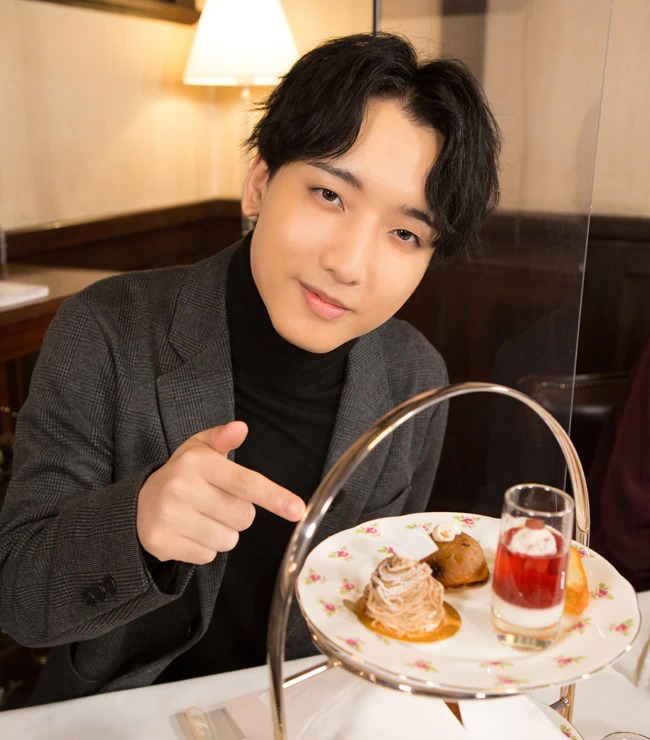
Surprised by the answer, the three each began with what they were interested in. First, Chiaki reached for the freshly baked scones. He put plenty of jam and clotted cream on them and dug in, letting out a quiet, “It’s good.” Combining it with the tea, he declared, “I could have this for breakfast forever.”
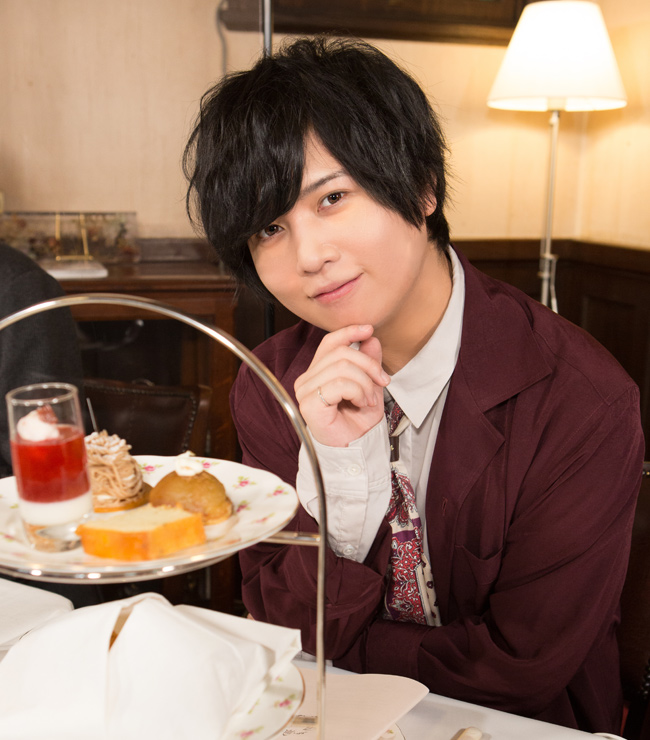
Next, Soma said, “I think I’ll try the scones too…” but went for the beef stew instead. After one mouthful, he beamed happily, made eye contact with Takuya and Chiaki, and finished eating it while nodding silently. “The stew is good, but so is the pie that goes with it… I’ll introduce this to my diet.”
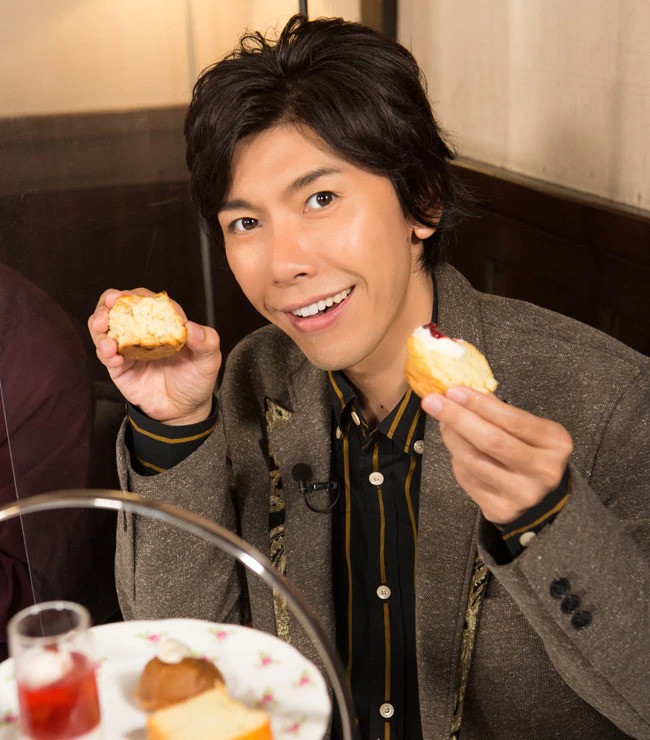
Takuya the sweet-tooth began with the desserts. Using the antique knife and fork to eat the small Mont Blanc, he said, “The cream is rich, yet the aftertaste is light…” He sipped his tea, smiled, and said, “It cleanly resets the palate.” Soma and Chiaki couldn’t hold back their laughter at his numerous words of wisdom.
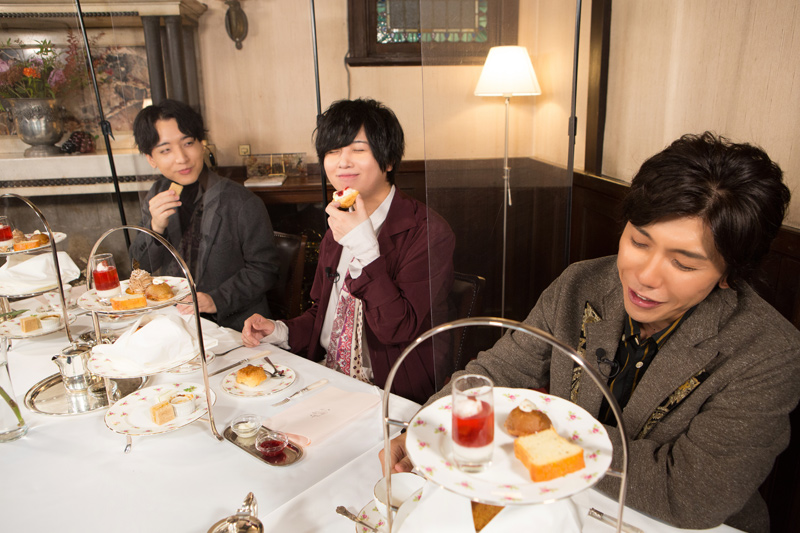
They enjoyed their afternoon teatime to their heart’s content while talking about Yuukoku no Moriarty. “That was a great time,” “I want to come here every week,” they said, reluctant to leave. The filming concluded with Soma reflecting on the day and saying honestly, “I wish this would become a regular thing… I’ll be praying for the powers that be to do something. *laughs*”
Saito Soma x Sato Takuya x Kobayashi Chiaki
Discussion
“We learned a lot about Chiaki-kun today *laughs*” – Soma
—How was today’s filming?
Takuya: Ahh, it was a lot of fun.
Chiaki: I was purely enjoying myself, forgetting that it was work.
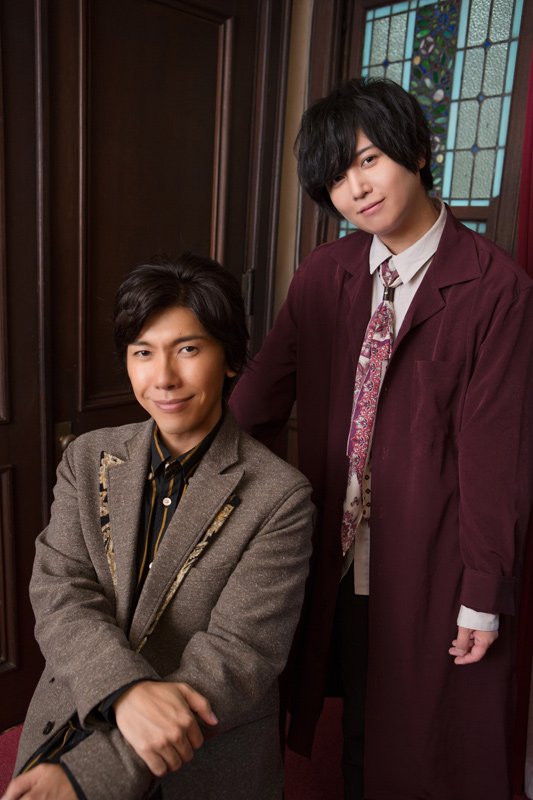
Soma: I knew about afternoon tea, but I’d never gotten the chance to try it, so this was a valuable experience. Also, personally, I was happy that the three of us got to film something together. It’s actually the first time for us.
Takuya: It’s the first time we’re all together outside of the anime recordings.
Soma: These days, even at the recordings, we can’t get the time to talk properly… I’m really glad that the three brothers got to spend this time together today. Eating together really does deepen bonds.
—Even though you weren’t eating from the same pot.
Takuya: It really does. It’s strange—eating the same flavours and sharing the sensation feels like the fastest shortcut to closing the distance on a spiritual level.
Soma: Also, we learned a lot about Chiaki-kun today. *laughs*
Chiaki: …What?!
Takuya: Yep, we did. *laughs*
Soma: I even asked your manager just now.
Chiaki: About what…?
Soma: “Is it okay for Chiaki-kun to be like that?”
All: *laughs*
Soma: It’s great for us, though. *laughs*


—During the Episode 1 screening, Kobayashi-san was the only one who could only appear in a video message. It was amusing how you two watched over him. *laughs*
Takuya: He was the only lively one there. *laughs*
Chiaki: I mean, you don’t appear as a video message that often, right? I didn’t know what the mood was going to be like there… *laughs*
“It was shocking when I added clotted cream and jam” – Chiaki
—Did anything particularly stand out to you from what you ate today?
Chiaki: It’d have to be the scones.
Takuya: They were extremely delicious.
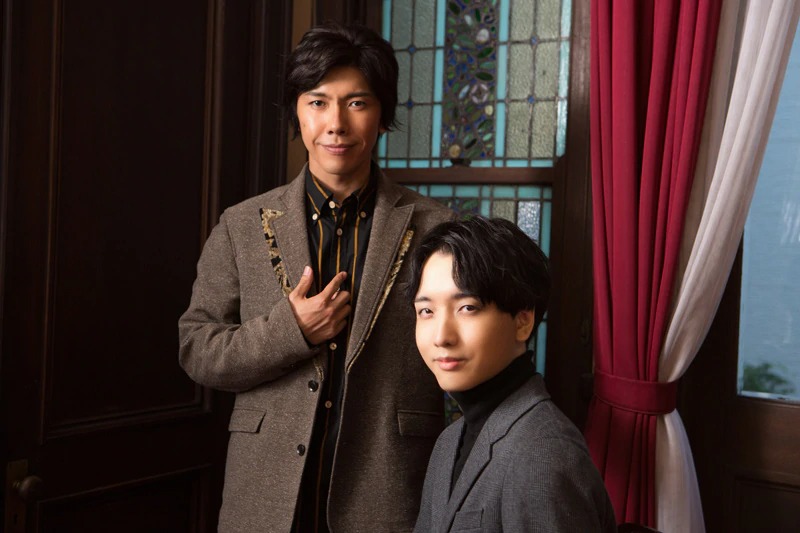
Chiaki: I’d never eaten scones before, so I thought they’d be more flavourless…
Takuya: It was like, is this bread? A cookie? Which one?
Chiaki: Sweet but not sweet… It wasn’t an easy-to-understand flavour. But it was shocking when I added that clotted cream and jam. The scones themselves were already delicious, but eating them like that was a surprise.
Soma: What surprised me was that it was okay to eat with our hands. I thought it’d be more formal, and that we’d have to eat elegantly, but it was unexpectedly casual, if I can call it that. We were allowed to have fun, which let me savour it more genuinely.
Takuya: True, that was a big factor.
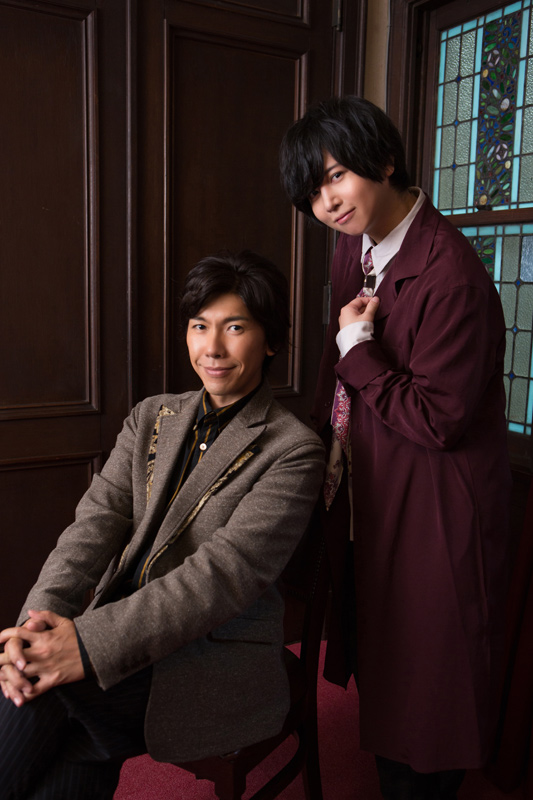
Soma: Also, when Shintaku-san gave us information like how cucumbers used to be a high-class delicacy… it made them taste “extremely cucumber”…
All: *laughs*
Soma: Learning those things was fun too.
Takuya: Cucumber sandwiches come up a lot in British novels, right? I always wondered why, but now I know. It was an extremely enjoyable and luxurious time spent, where we got to enjoy the country’s food, history, and culture. I thought about why the British value teatime so much, but realized that it must be because tea and food are important for building human relationships.
“I said that line without thinking” – Takuya
—I’d like to ask about the tea as well. You each chose from the five types of tea leaves, and I thought it was brilliant how Sato-san compared tea to a woman…
Takuya: *laughs* I knew about names like Darjeeling and Earl Grey, but I didn’t actually think about how different the tastes would be. There were five types prepared for us this time, and the differences were an unprecedented surprise for me. I said that line without thinking.
All: *laughs*
Takuya: I’m just saying whatever I want. *laughs*
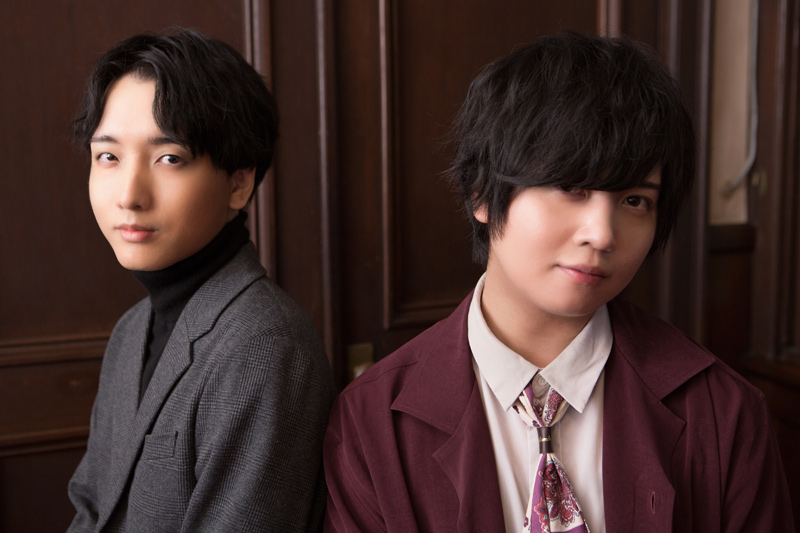
Soma: I don’t drink a lot of black tea, but I liked the format of afternoon tea. I like being able to choose from different things, like obanzai or those sets where you can choose three small dishes. The restaurant also had a lovely atmosphere, and I’d like to come back many times. I also want to try the other types of tea.
Chiaki: I usually eat strongly-flavoured foods or box lunches from the convenience store, so I think my tongue has become less sensitive. But this time, I thought, “Maybe this is what true deliciousness is.” And though there was no alcohol involved, I really enjoyed drinking together with you two.
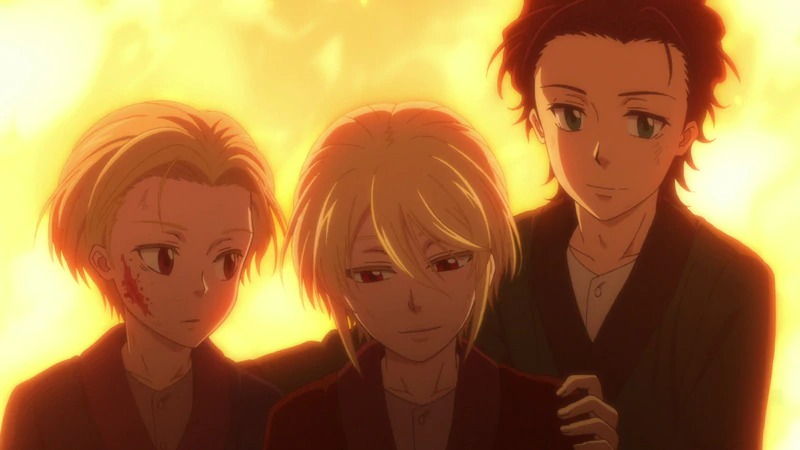
—Do you think that this experience will influence your future voice acting and character building?
Takuya: Extremely so. At the very least, I’m sure there’ll be a difference in the atmosphere when the three brothers are at home together.
Soma: In the tea-drinking scenes, I’ll have a definite idea of the taste, so the way I handle those situations will change.
“The drama and the realism are both depicted with care” – Soma
—Now then, I’d like to ask about the series as well. First, what were your impressions after watching the anime?
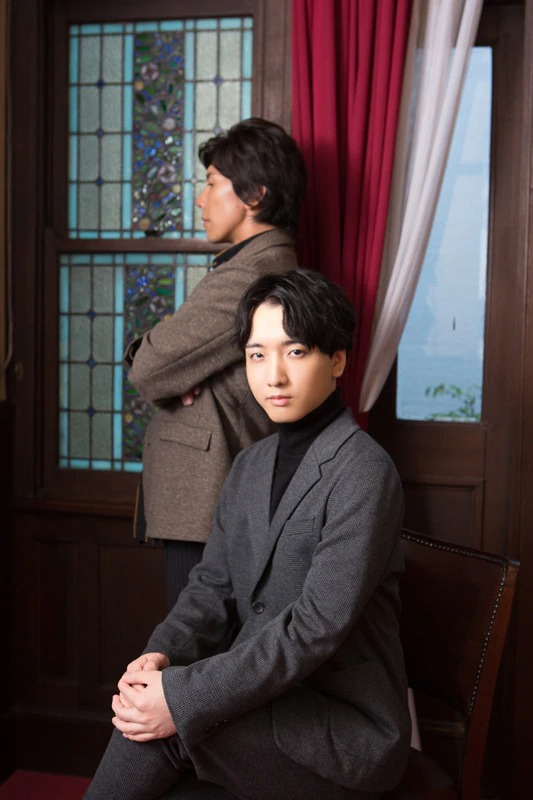
Takuya: Fans of the original manga may have been surprised that Episode 1 was an anime-original story. However, it was created to be an optimal introduction to the brothers’ stories. I think it was done to say, “This is what Yuukoku no Moriarty is like.” With only 30 minutes per episode, I imagine the director and the rest of the staff have a difficult time deciding which stories and scenes to show from the manga, but I get the impression that they’re making sure not to leave out anything important.
Chiaki: Manga and anime have different presentation styles, and there are directions and expressions that shine more in anime. In that sense, I think the anime is created in a way that you can enjoy it as an anime. Today we were given the opportunity to see and feel an antique building and furniture resembling England’s at that time, which made me realize that the anime depicts that era realistically. The director and the staff did a lot of research.
Soma: Exactly. (said in English)
All: *laughs*
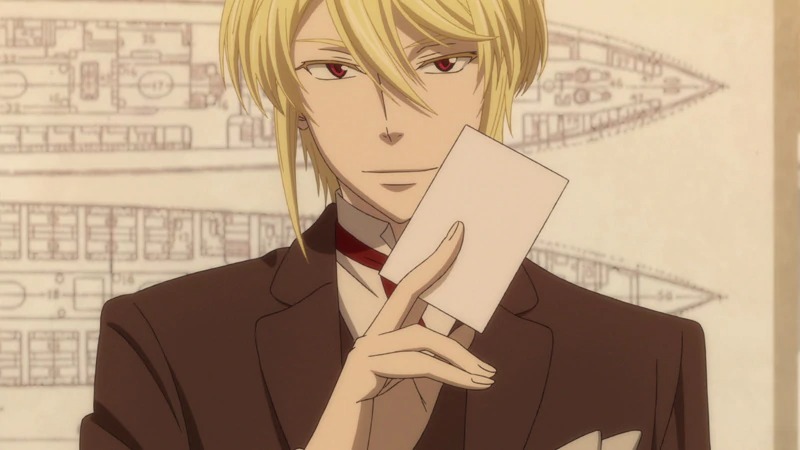
Soma: It’s really as the other two said. I think the anime takes the manga’s essence and presents the appeal of Yuukoku no Moriarty in a different medium. Manga and anime each have their own strengths, and both of them show the series’ charm in their own ways. To give a specific example, “So when William is smoking, there is music in the background and feathers falling from the sky.” *laughs*
All: *laughs*
Soma: I think the drama and the realism are both depicted with care, so I hope you’ll enjoy it whether you’re a fan of the manga or you’re starting with the anime.
“William is a ‘Louis Protection Extremist'” – Soma
—One of the themes of this series is the bonds between the three brothers. How do you interpret the characters’ relationships in your acting?
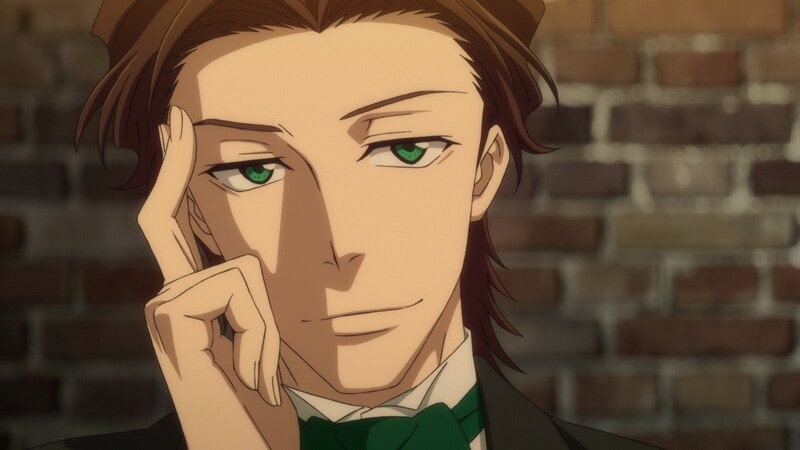
Soma: Albert is an extremely sharp and capable person. Ever since he was a child, he felt uncomfortable with the world, but he couldn’t tell what exactly was the problem or what he should do. Then he met the young William, and the path was opened to him. To William, he’s the most trustworthy partner in crime. He thinks about things from the same perspective and can take practical action from a different position. In that sense, Albert is the brother who does the most actual work. On the other hand, Louis is a special person to William. I think that William has a “Louis Protection Extremist” side to him. *laughs*
Chiaki: *laughs*
Takuya: He can’t stay logical when it comes to Louis. *laughs*

Soma: William is prepared to face self-ruin as a result of using crime to reform the world, but he doesn’t want to get Louis involved. He wants to keep Louis away from uncleanness. So even though it seems like it’s Louis who admires William, William seriously cares about Louis too, in his own way. I think it’ll be shown in the anime later too, but their bonds deepen after Louis speaks his mind. The change in the brothers’ relationship is one of the charms of this series.
Takuya: I think that Albert is quite unusual. The three of them are on the criminal side, taking the lives of the greedy, arrogant nobles, but Albert grew up right in the middle of those nobles. He should’ve been raised to think that it’s normal for nobles to act like that, and not to question it. Yet, he felt that his world was crooked and even reached the point of thinking that it had to be destroyed. It wouldn’t be wrong to say he’s eccentric. If anything, he’s a dangerous individual. He experienced a form of divine revelation when he met William and Louis, and found his purpose in life.
—He found partners who he could trust.
Takuya: I guess you could say… he met a business partner who could turn his ideals into reality, with the actual results to back it up. He trusts William and Louis to accomplish his dream, but I think part of why it works is because they aren’t his real brothers. Since they aren’t related by blood, they don’t get overly reliant on each other. There’s an absolute sense of distance and tension between them, which I think is one of the curiosities surrounding the Moriarty brothers.


Chiaki: I agree that to Louis, there’s a sense of distance between him and Albert, because unlike William, he isn’t related to him by blood. But on the other hand, he does trust Albert. I think that William and Albert trust Moran and Fred to some degree, but Louis felt wary when Fred visited their house at night—he doesn’t really open up to others. In that sense, I think that Albert is the only non-blood relative that Louis trusts.
—And he has something resembling absolute trust towards William.
Chiaki: Right. If carrying out their plan meant losing William, I can’t even imagine what Louis would choose. His trust exceeds the realm of brotherly love. But that doesn’t mean he blindly believes William—at first I thought it might be better to voice him with affection towards William (though not to the point of having hearts at the end of lines *laughs*), but as I was reading the script, I saw that he asked William questions like, “What does that mean?” or “Isn’t that dangerous?” If he really trusted William wholeheartedly, it wouldn’t be out of place for him to accept everything without question, but he thinks about William’s words and voices his concerns. I think that Louis wants to protect William and Albert’s home in his own way.
“I’d like to go to a pub and drink beer from large mugs with Hudson-san *laughs*” – Soma
—By the way, are there any characters you like besides the ones you voiced?
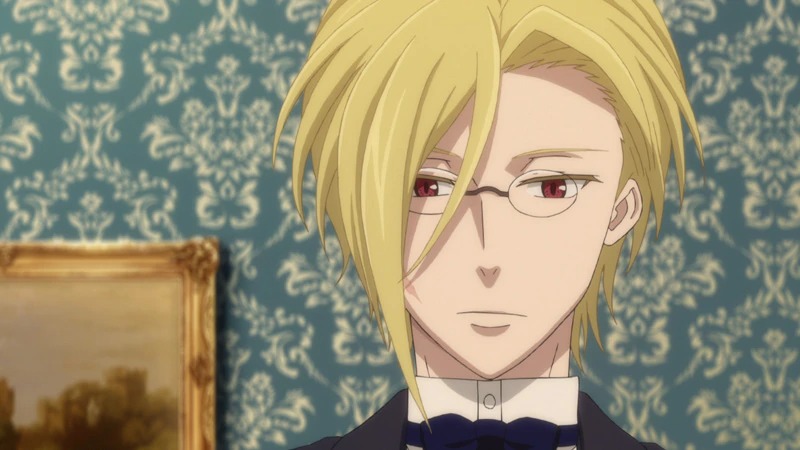
Chiaki: I like William-niisan.
Takuya: So fast! It’s as if you’ve never changed from your first impression. *laughs*
All: *laughs*
Chiaki: I always answer that question with William-niisan.
Soma: …But what’s the truth?
Takuya: …Do you mean it?
Chiaki: I think that Jack is austere and cool, but… No *laughs*. I tend to get immersed in my role, so it’s easy for me to like the characters that my character likes. Regardless of gender. So William’s scenes catch my eye, and I end up following him with my eyes, thinking that he’s cool.
Soma: I see.
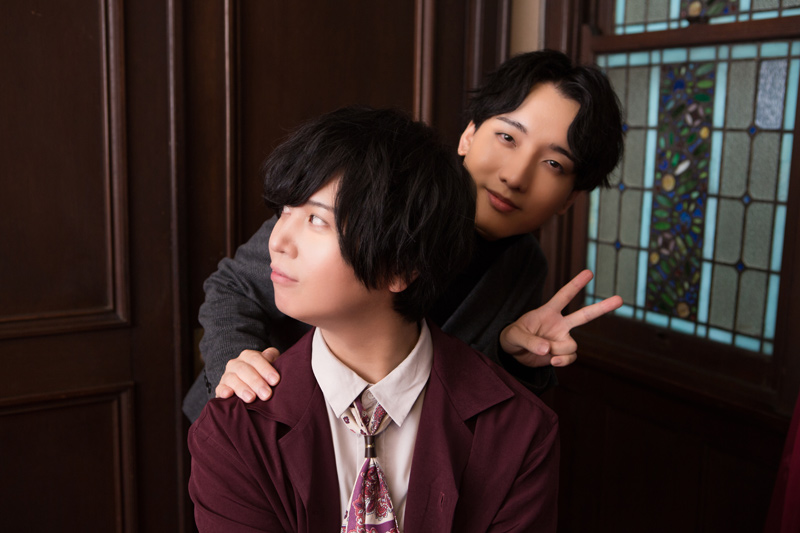
Takuya: I like Inspector Lestrade. He seems like he’s seen much of life *laughs*. He also prioritizes his own justice over his police work. He must have quite the mental fortitude in order to associate with a problematic person like Sherlock, and I also really like the human kindness he shows in not being able to do things coldheartedly.
Soma: I like von Herder. As for why, I’ve always liked that kind of unconventional character *laughs*. Also, Hudson-san. She’s very charming as a woman, and I’d like to go to a pub and drink beer from large mugs with her. *laughs*
Takuya: Oh, that sounds nice. In that case, I want Moneypenny-san at our office.
Soma: Ohh, I know what you mean!
Takuya: She’s very capable. *laughs*
“Will there be a swimsuit episode, as I hoped for at the Episode 1 screening…?” – Chiaki
—This feature will be published when the first cour has reached its climax. Please give us a message for the readers.
Soma: First, thank you for reading this far. At the time that we’re doing this interview, we’ve just finished recording up to Episode 8, and we’re enjoying encountering new mysteries, characters, and anime-specific appeals. Please enjoy the show that we’ve put 120% of our excitement into, and use the manga to speculate about what’s to come. We hope for your continued support.
Takuya: I’m always looking forward to every recording because of how fulfilling they are. The production team is also doing their best, adjusting every last detail to deliver the best that they can. We want to bring you a wonderful story and characters. I’m sure there will be various developments from here on out—after all, I never expected to be going for afternoon tea with these two today *laughs*—so please look forward to those as well.


Chiaki: The manga and anime present the story in different ways and some of the developments differ as well, but on the flip side, I think that means the people who read the original manga can also enjoy new things in the anime. And personally, I’m interested in what role Louis will play later on. Will there be a swimsuit episode, as I hoped for at the Episode 1 screening…? *laughs*
Soma: Yeah, it could be an anime original.
Takuya: It’s not a complete lost cause.
Chiaki: Right? It could even be a 5-minute anime. I won’t abandon hope. *laughs*
All: *laughs*
Chiaki: Well, I’m only half serious *laughs* but I think it’d be nice to have scenes where they take a breather. I’m looking forward to the story developments, and I hope the viewers will continue to do so as well.
